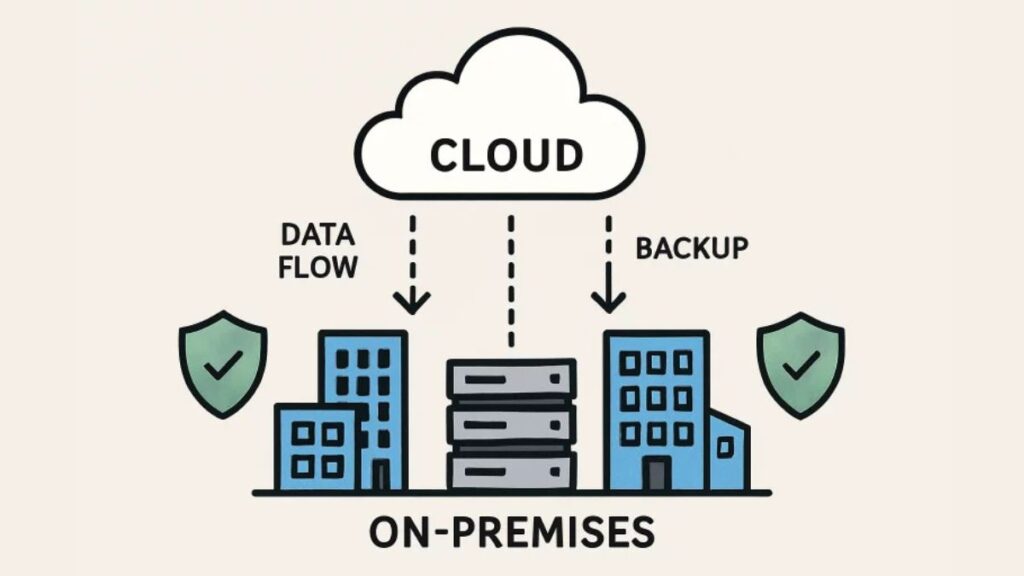In the current digital era, businesses are embarking on a transformative journey that is fundamentally redefining the core of business continuity. The increasing reliance on cloud-based solutions has rendered many traditional strategies obsolete, paving the way for more fluid and responsive frameworks that meet the demands of today’s always-on business environment. Distributed architectures and remote access capabilities are no longer supplementary to business operations; they are now at the heart of enterprise agility and efficiency. However, these benefits come with new forms of risk, ranging from cyber threats to third-party service disruptions, and a demand for operational diligence at every level. To thrive, organizations must now anchor their resilience around innovative strategies such as building with remote storage disaster recovery. This foundational approach not only ensures the continuity of business processes in location-independent contexts but also empowers businesses to address disruptions and threats in real-time, wherever and whenever they arise.
Nevertheless, the last few years have made it abundantly clear that technology alone cannot provide complete protection. Global system outages, such as the recent CrowdStrike software error, and the surge in large-scale cyberattacks illustrate the importance of comprehensive planning. Businesses must therefore develop multifaceted continuity plans that go well beyond technical controls. This means integrating cutting-edge tools, establishing continuous validation practices, and harnessing the capabilities of the workforce. True resilience in a cloud-driven landscape is possible only when digital innovation is matched by proactive human preparedness.
Evolving Threat Landscape
The transition to cloud-centric operations has fundamentally shifted the risk posture of virtually every organization. Where once risks were primarily localized—think isolated hardware failures or site-specific disasters—the cloud now presents a global dimension to threats. Recent, high-visibility incidents, such as the CrowdStrike software glitch that disrupted countless Windows systems worldwide, starkly highlight the dangers of centralizing too many mission-critical workloads with a single provider or architecture. As a result, CIOs and IT leaders are reassessing cloud architectures to avoid single points of failure, focusing on strategic diversification, and investing in robust, multi-cloud continuity planning.
According to insights from CIO.com, awareness of the modern threat landscape is driving a renewed emphasis on resilient multi-cloud strategies, sophisticated backup routines, and advanced failover protocols that enable organizations to remain online during provider outages or unexpected disruptions.
Integrating AI and ML into Continuity Planning
Artificial Intelligence (AI) and Machine Learning (ML) have revolutionized the defense mechanisms available for business continuity, enabling smarter, data-driven decision-making and automation. With predictive analytics, organizations can proactively identify anomalies, such as unusual traffic, infrastructure performance issues, or subtle cybersecurity intrusions, long before they escalate into crises. AI-enabled automation not only accelerates real-time threat response but also streamlines the recovery cycle, significantly reducing downtime and ensuring vital services remain accessible.
As industry thought leaders observe, this integration marks a shift from static, checklist-based disaster recovery toward dynamic, continuous improvement. Intelligent systems learn from every simulated incident and real event, refining their capacity to predict and respond with each round of feedback.
Embracing Hybrid Cloud Strategies
The rise of hybrid cloud, an orchestration of public, private, and on-premises resources, stands as the cornerstone of contemporary business flexibility and resilience. By synchronizing critical workloads across on-premises infrastructure (for maximum security and compliance) with rapidly scalable cloud solutions (for disaster recovery and elasticity), organizations achieve a resilient posture that can adapt to fluid regulatory and operational requirements. This model inherently mitigates the risks of vendor lock-in and single-provider concentration.
Hybrid environments also allow for tailored continuity solutions that match the sensitivity of each dataset and application with the appropriate security controls. By adopting this approach, organizations significantly reduce their vulnerability to broad-reaching public cloud incidents and expedite their recovery timelines.
Importance of Regular Testing and Validation
Continuity plans and disaster recovery strategies thrive or fail based on their efficacy in high-pressure moments. However, numerous studies show that many organizations do not test their backup systems or recovery procedures frequently enough, increasing the risk of unplanned failures during actual crises. With only 15% of organizations reportedly conducting daily backup testing, the majority are leaving their operations exposed to unexpected downtime or data loss. Consistent, scenario-driven testing enables firms to confirm that their recovery time and point objectives (RTO and RPO) are not only theoretically achievable but also realistic under stress.
Beyond the technology, testing drills help to verify staff competency with procedures, ensure that communication channels function under strain, and reveal potential weak spots before they can cause operational or reputational damage. Conducting realistic, frequent exercises strengthens response readiness and hones crisis skills across the organization. For detailed strategies on improving validation processes, refer to “Future-Proofing Business Continuity: BCDR Trends and Challenges for 2025.”
Human Element in Continuity Planning
Despite the advances in automation and artificial intelligence, the human dimension remains irreplaceable in business continuity planning. People, with their ingenuity, adaptability, and leadership, are often the defining factor during critical events. Modern organizational strategies are increasingly investing in cross-departmental training, comprehensive leadership development, and robust intra-company communications to foster a culture where both individuals and teams are prepared for unpredictability.
The best continuity plans strike a balance between the strengths of smart technology and human intuition and experience. Organizations that promote a culture of resilience, where every team member understands their role in maintaining business stability, tend to recover more quickly and with less disruption even in unprecedented situations.
Regulatory Compliance and Data Governance
The regulatory landscape governing digital data and cloud operations is evolving at a pace unmatched in previous decades. With the rapid adoption of cloud-based storage and increased supply chain complexity, regulatory compliance and data governance have become high-priority concerns for companies aiming to stay ahead of legal requirements. Today’s regulations not only require the safeguarding of sensitive information but also demand full auditability, proof that data management, access, and recovery are in strict alignment with both laws and internal policies.
Maintaining continuous compliance requires constant monitoring, timely patch management, and meticulous record-keeping practices. These activities not only minimize legal and reputational risks but also enhance customer and partner confidence, ensuring ongoing business stability even in the face of new mandates or audits.






